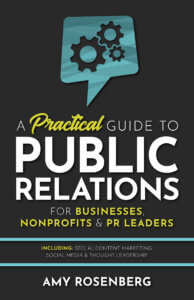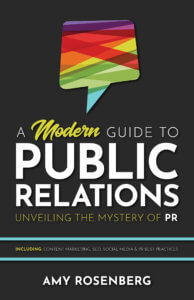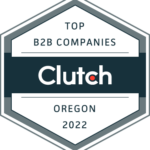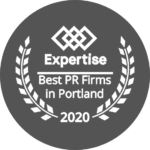![How To Be Okay Sucking At Stuff with Mary Davies [Podcast]](https://www.veracityagency.com/wp-content/uploads/How-To-Be-Oka-Sucking-at-Stuff-800x600-2.jpg)
How To Be Okay Sucking At Stuff with Mary Davies [Podcast]
Mary is the President, UX Consultant, and Social Media Manager at Beanstalk Internet Marketing. She began her career as a web designer in 2002 and quickly began to see the importance of SEO and Internet marketing as part of a powerful web presence.
Mary’s Engage Conference Presentation Title
Amy starts by asking Mary how she came up with the “How To Be Okay Sucking At Stuff” title for her presentation at the SEMpdx Engage Conference last summer. The Engage Marketing Conference is a two-day digital marketing conference featuring informative learning tracks and panel sessions designed to provide expert insight into the latest strategies and technological advancements in digital marketing, social media, content, UX/design, creative, advertising, SEO, paid media, and more. Mary had gone to several presentations herself and felt some titles were unclear. So she thought this title would be more straightforward.
Although, she goes on to admit that it wasn’t entirely her idea. Someone at SEMpdx approached and pitched Mary about doing a presentation on the topic. At first, she was hesitant, but then decided this message needed to be out there. She had fun being able to get away from “technical marketing speak.”
Insecurities and Unreal Expectations
Amy asks Mary if she can go over some of the insecurity and expectation topics she touched on in her presentation. Mary explains that people need to remember they will not always succeed at everything they do. Today’s social media-driven world adds a further challenge to one’s insecurities because there can be a lot of negativity online. Mary adds she has even seen it when marketers are “torn to shreds” for even asking a question.
Because people do not want to look silly in front of their peers, such negativity can make them afraid to ask questions or try something new. She believes that rings true for both newcomers and experienced professionals in the industry.
Dealing with Negative Pushback
Amy goes on to ask Mary if anyone has ever been rude to her and if she has any tips for dealing with that. Mary instantly responds, “Yes, they have.” She believes those who want to bring you down, are not the people you want to be working with. Mary then offers up this exceptional advice:
“I think that it’s easy for us to be fearful of people that are going to be really mean or snap at us. But at the same time, I always try to think, what would I do if someone else asked that question? What’s my natural inclination? Is it to lambaste them? Is it to make them feel terrible about it? No,it’s not. I’m actually gonna go the opposite route and try to make sure that they don’t feel bad for that; asking that question, or for whatever misunderstanding was there.”
Mary believes she has been fortunate that most pushback she receives isn’t from clients. She feels grateful to have clients that let her ask questions and take risks. Being an employer herself, she encourages her employees to do the same. Instead of putting people down, she thinks people should use that instance when they receive negative feedback as a learning experience about how they can become clearer.
Amy and Mary discuss much more in this episode, including perfectionism, mental health, managing burnout and finding the right client. Listen now to get these tips and more, from Mary.
Don’t Miss an Episode
You can access more great episodes by subscribing to the PR Talk podcast on iTunes, Stitcher, Google Podcasts, iHeart Radio and Spotify.
About the guest: Mary Davies
Mary Davies began her Internet career as a web designer in 2002. She founded and operated a successful web design firm by the name of Far-sited Web Design after attending college to hone her design skills. Through years of experience, Mary has honed her skills with a strong focus on user experience, conversions, social media, paid search, and organic SEO. Now, in her role as a principal at Beanstalk Internet Marketing, she focuses her passion on the user journey through all online platforms, whether it be paid search, social media, or onsite.
Connect and follow Mary on social media:
This episode of PR Talk is brought to you by PRSA Oregon
Throughout Oregon and Southwest Washington, PRSA provides members with networking, mentorship, skill building and professional development opportunities – whether you are a new professional fresh out of college or a skilled expert with 20 years in the industry. Check out PRSAoregon.org for more information on how membership can help you grow and connect.

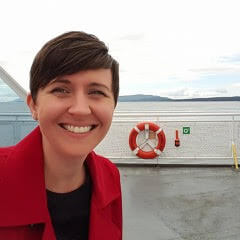
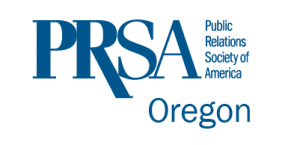
![Using Thought Leadership to Drive SEO [Podcast]](https://www.veracityagency.com/wp-content/uploads/Using-Thought-Leadership-to-Drive-SEO-800x600-1.jpg)
![Visibility is Power with Roshanda Pratt [Podcast]](https://www.veracityagency.com/wp-content/uploads/Roshanda-Pratt-800x600-1.jpg)

![Brand Journalism with Robert Johnson [Podcast]](https://www.veracityagency.com/wp-content/uploads/Robert-Johnson-800x600-1.jpg)

![Talking Digital PR with Domenica D’Ottavio [Podcast]](https://www.veracityagency.com/wp-content/uploads/Domenica-DOttavio-800x600-1.jpg)

![Pitching TV Coverage Via Satellite with Doug Simon [Podcast]](https://www.veracityagency.com/wp-content/uploads/Doug-Simon-800x600-1.jpg)

